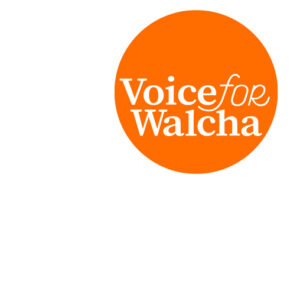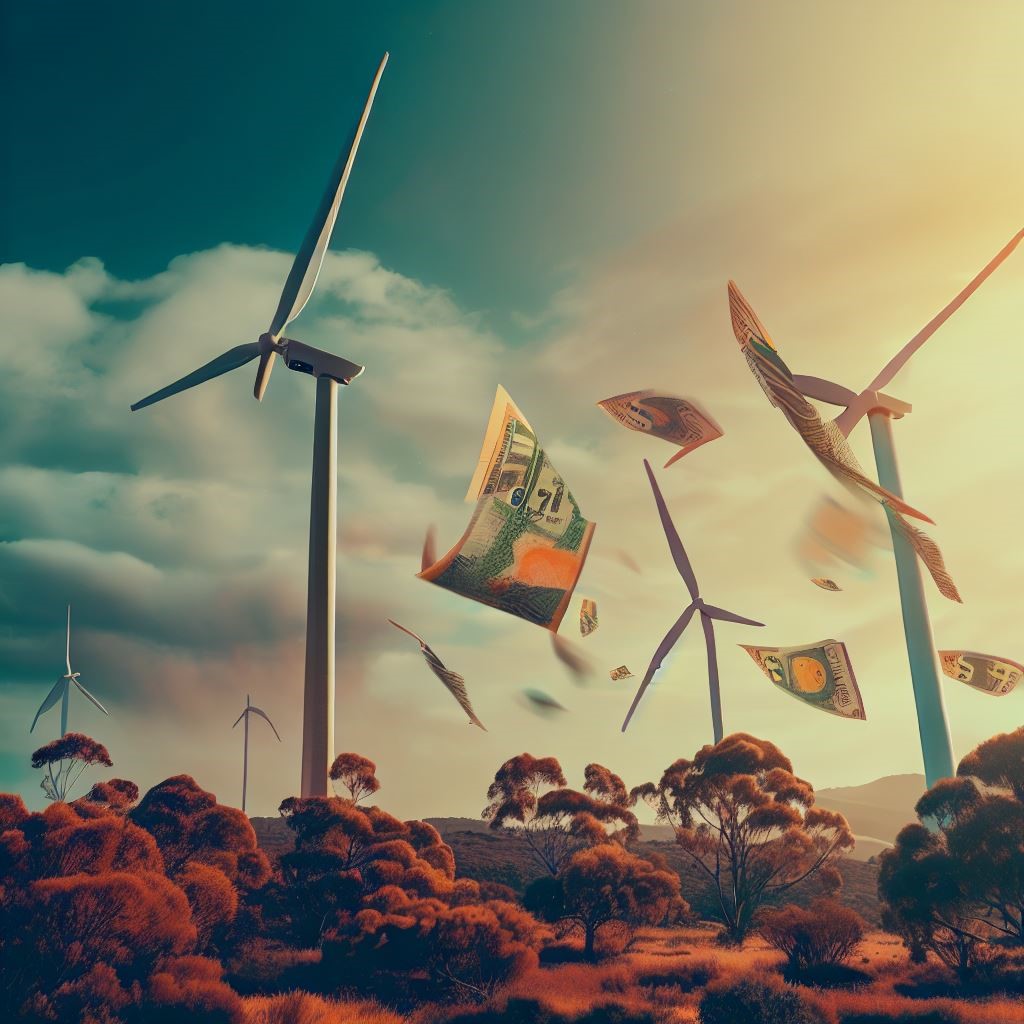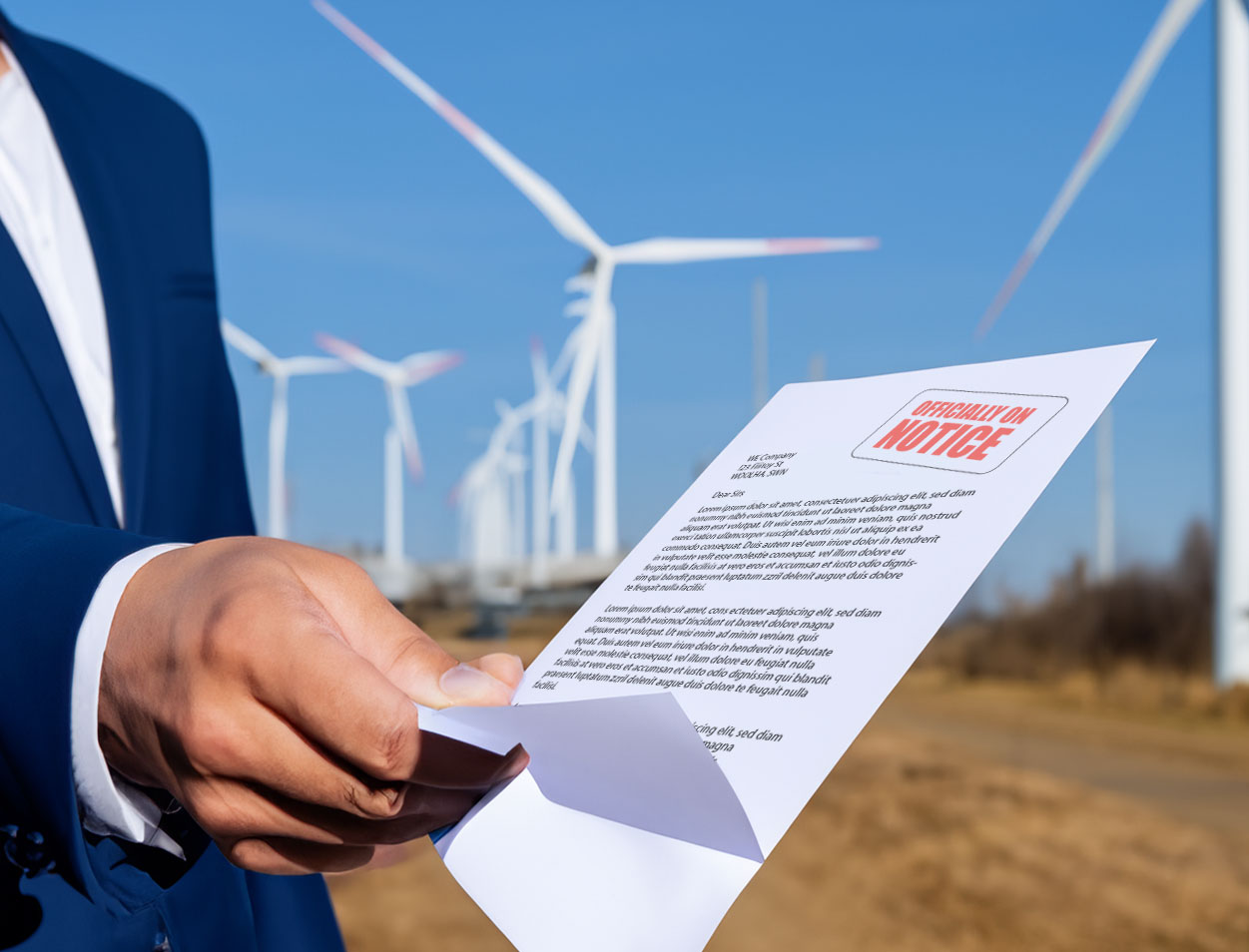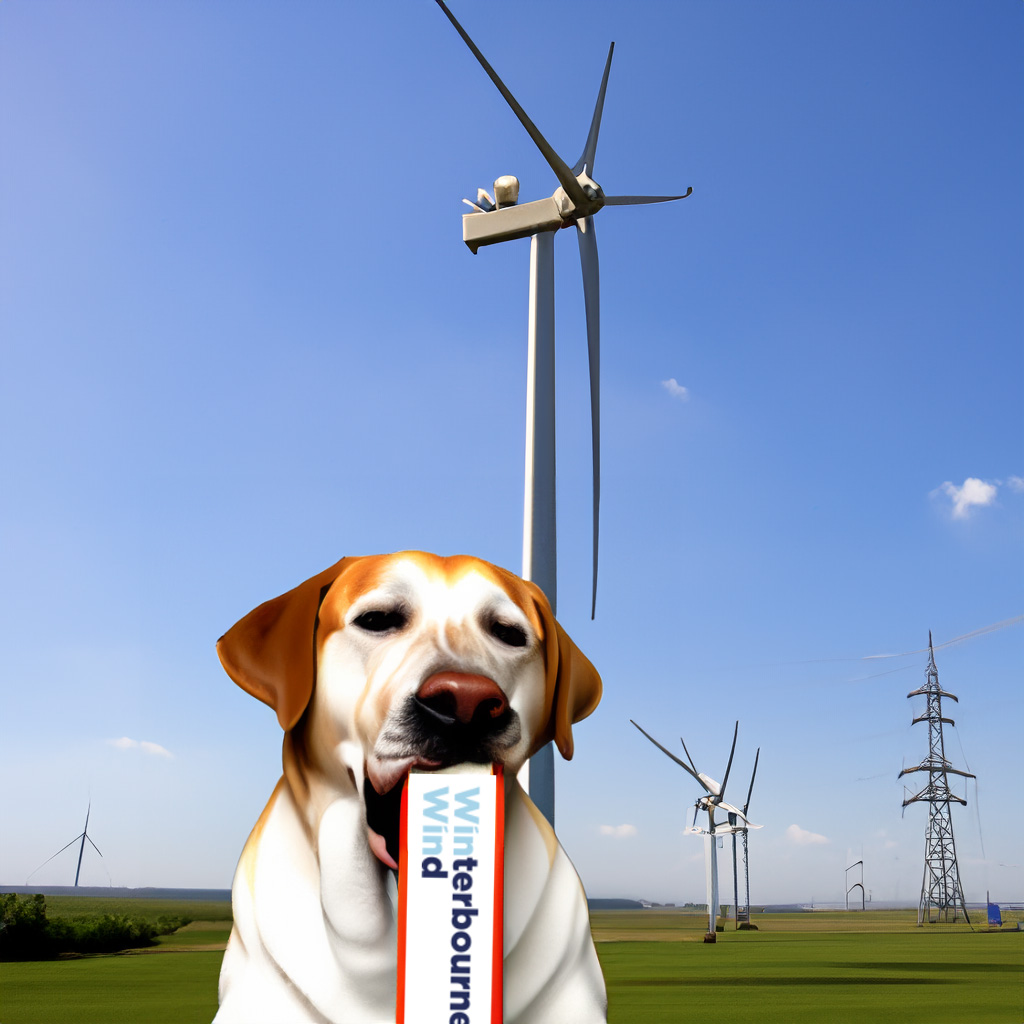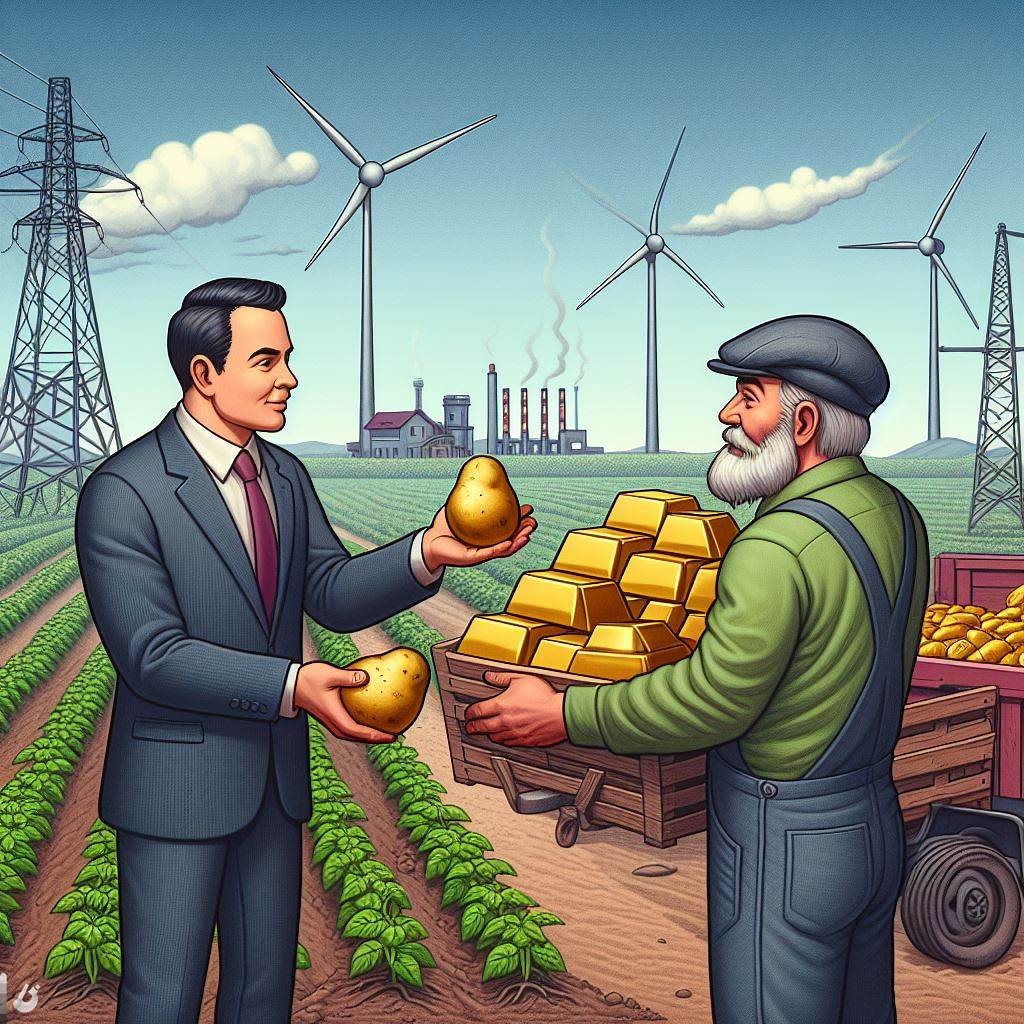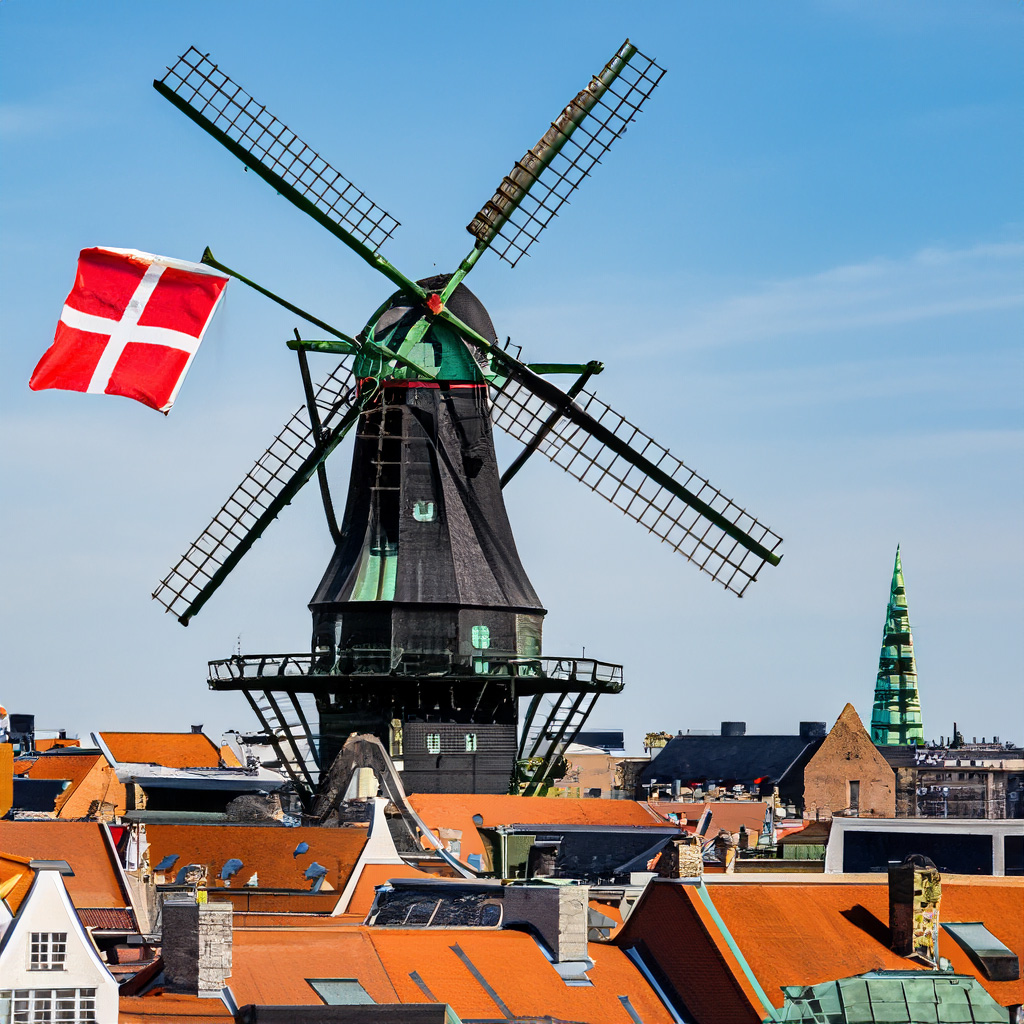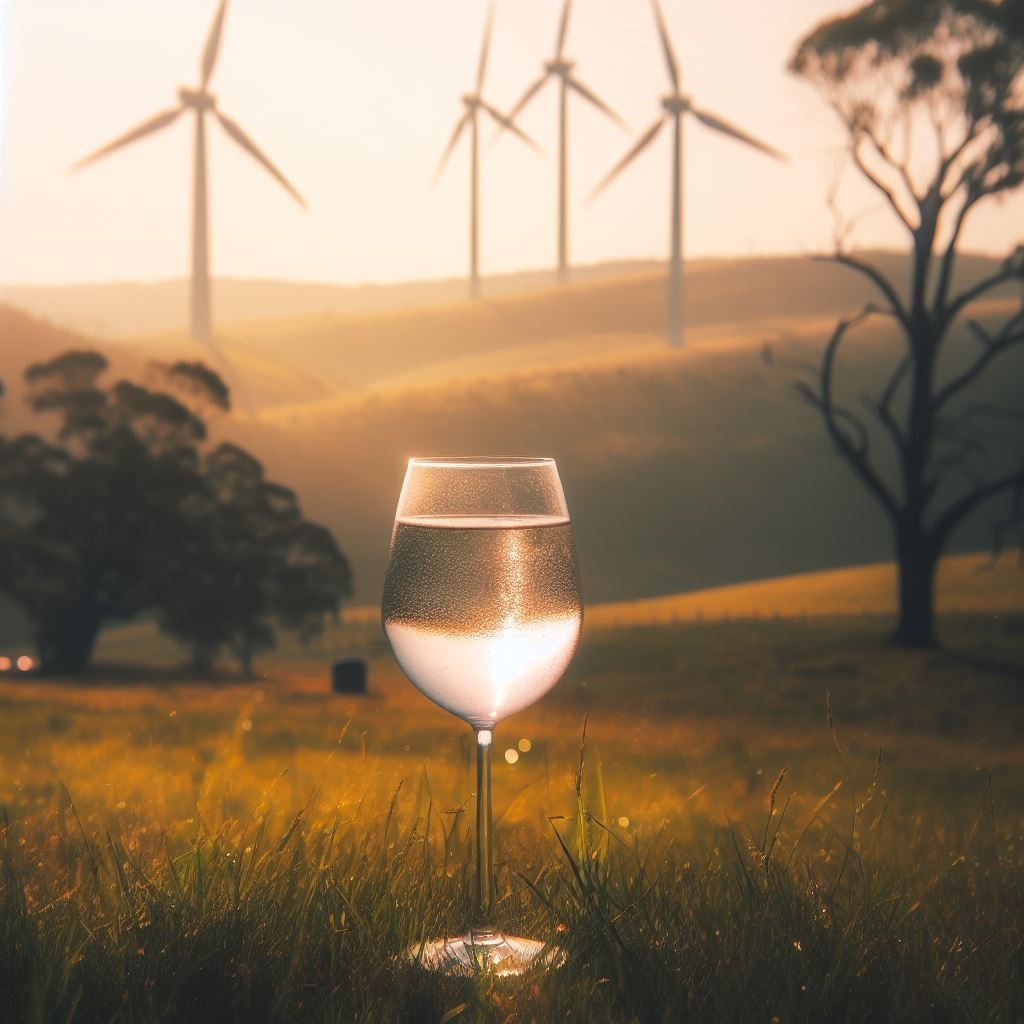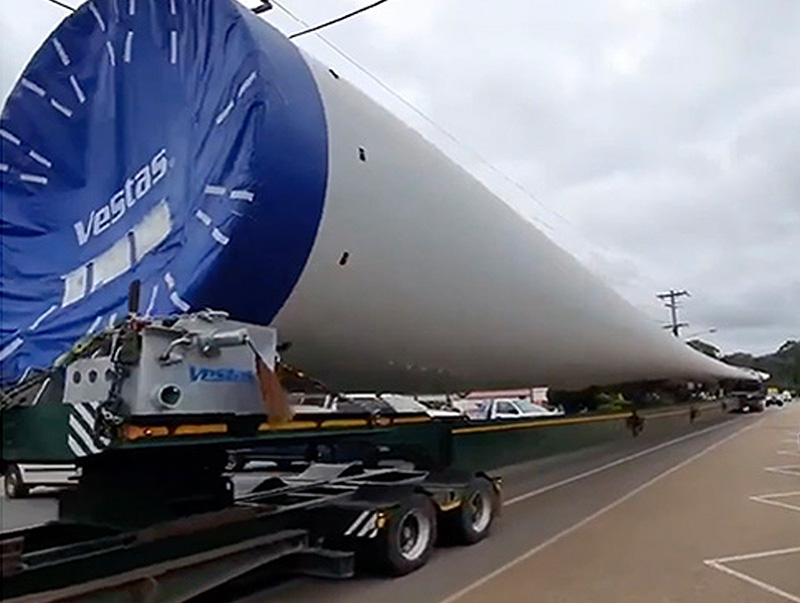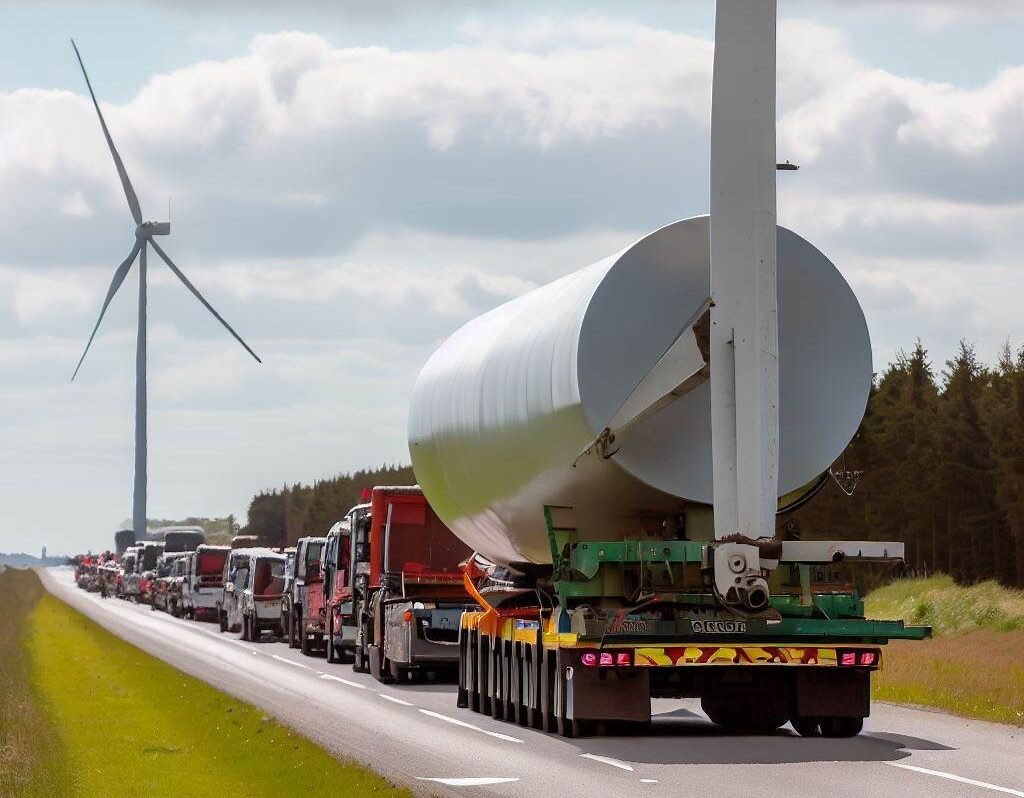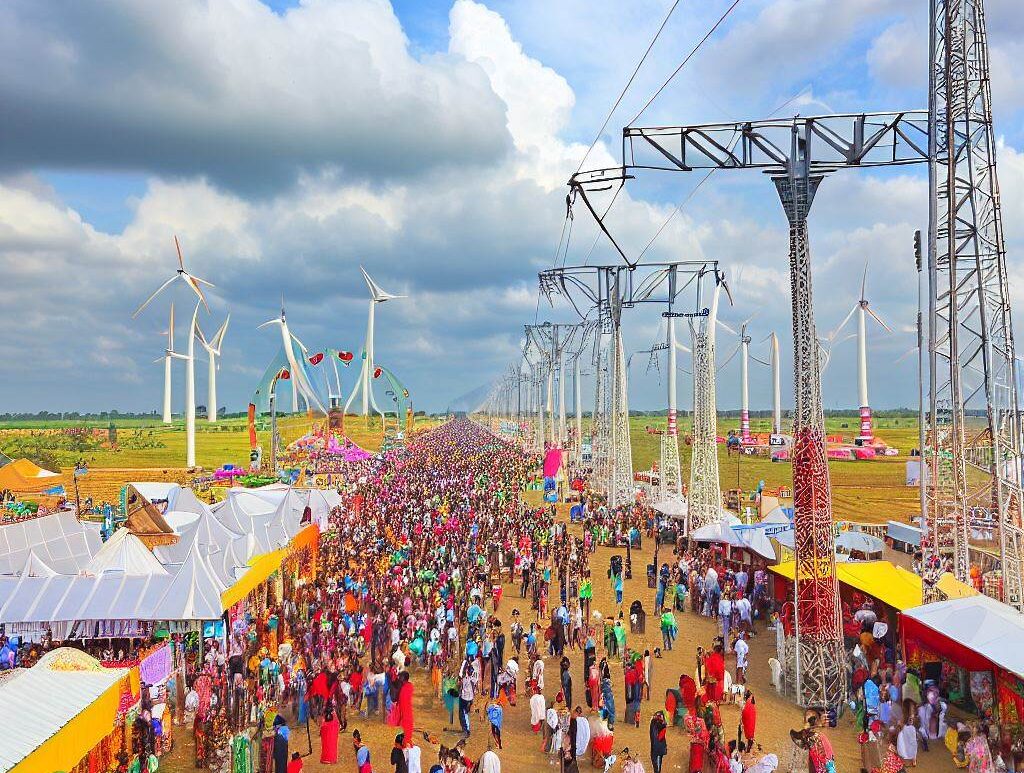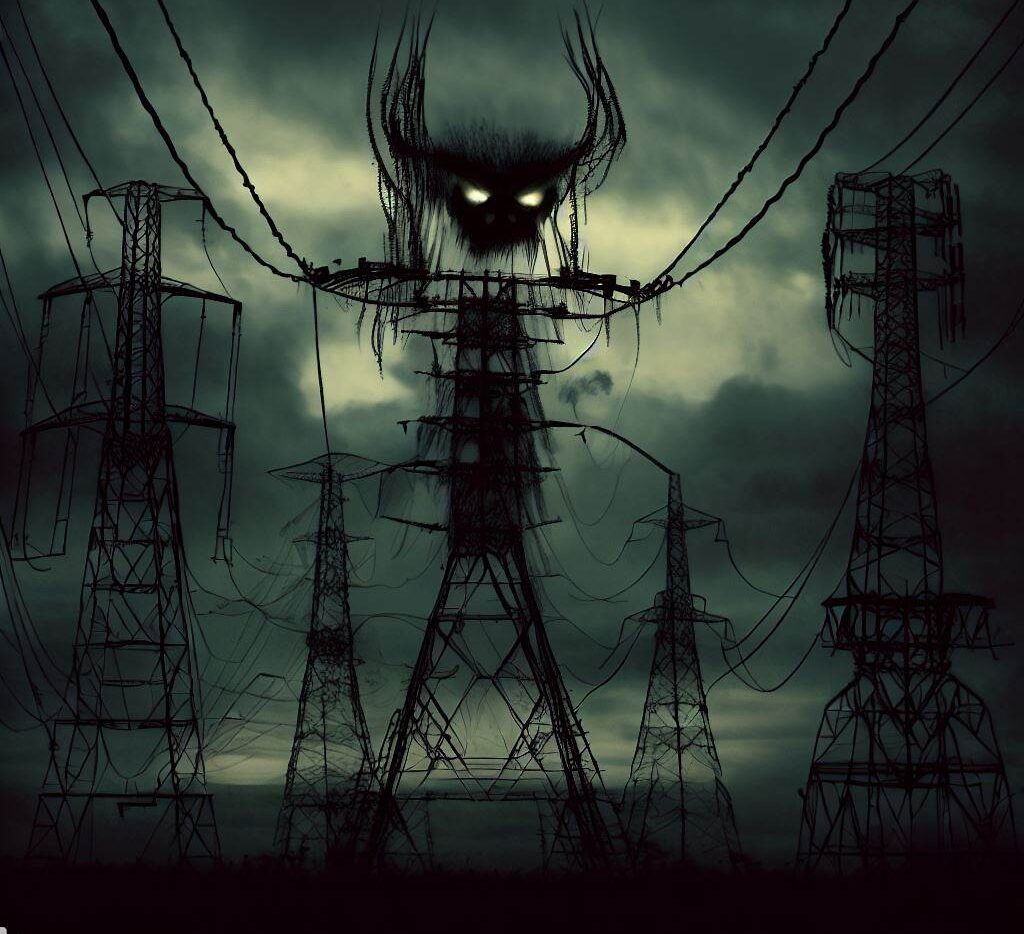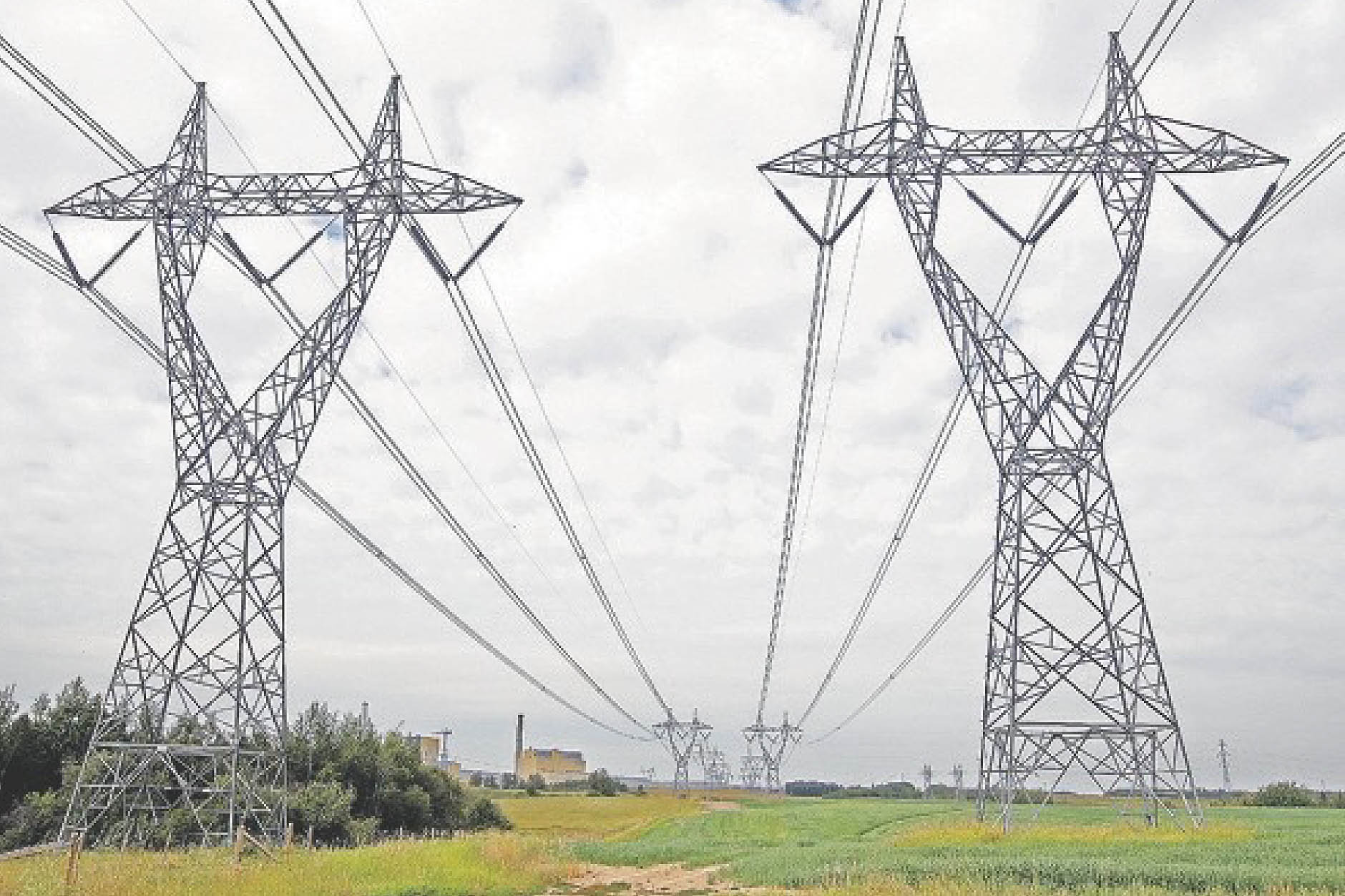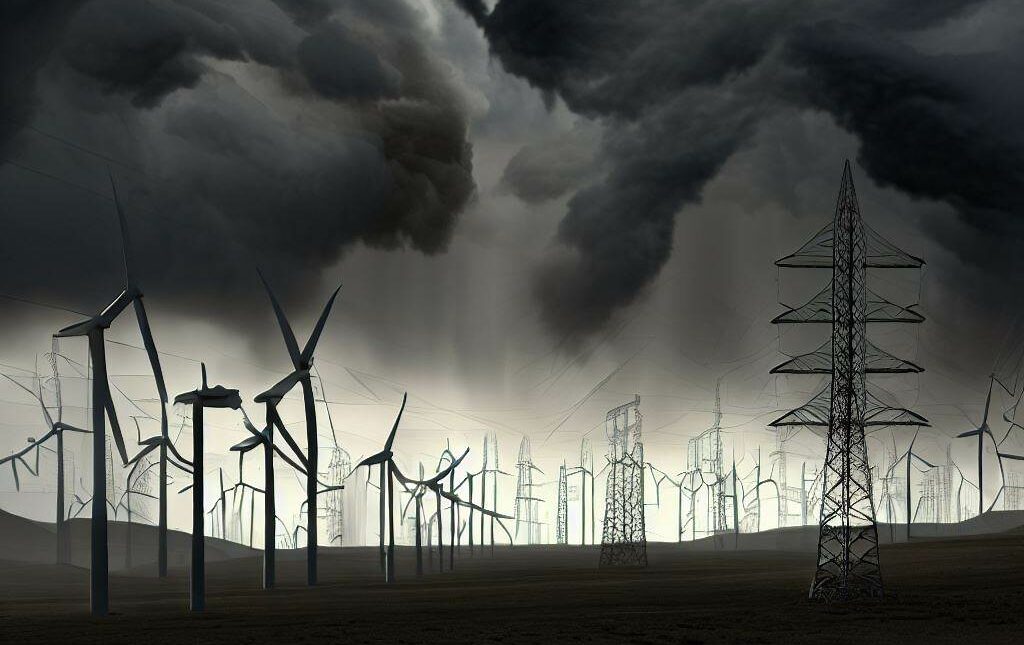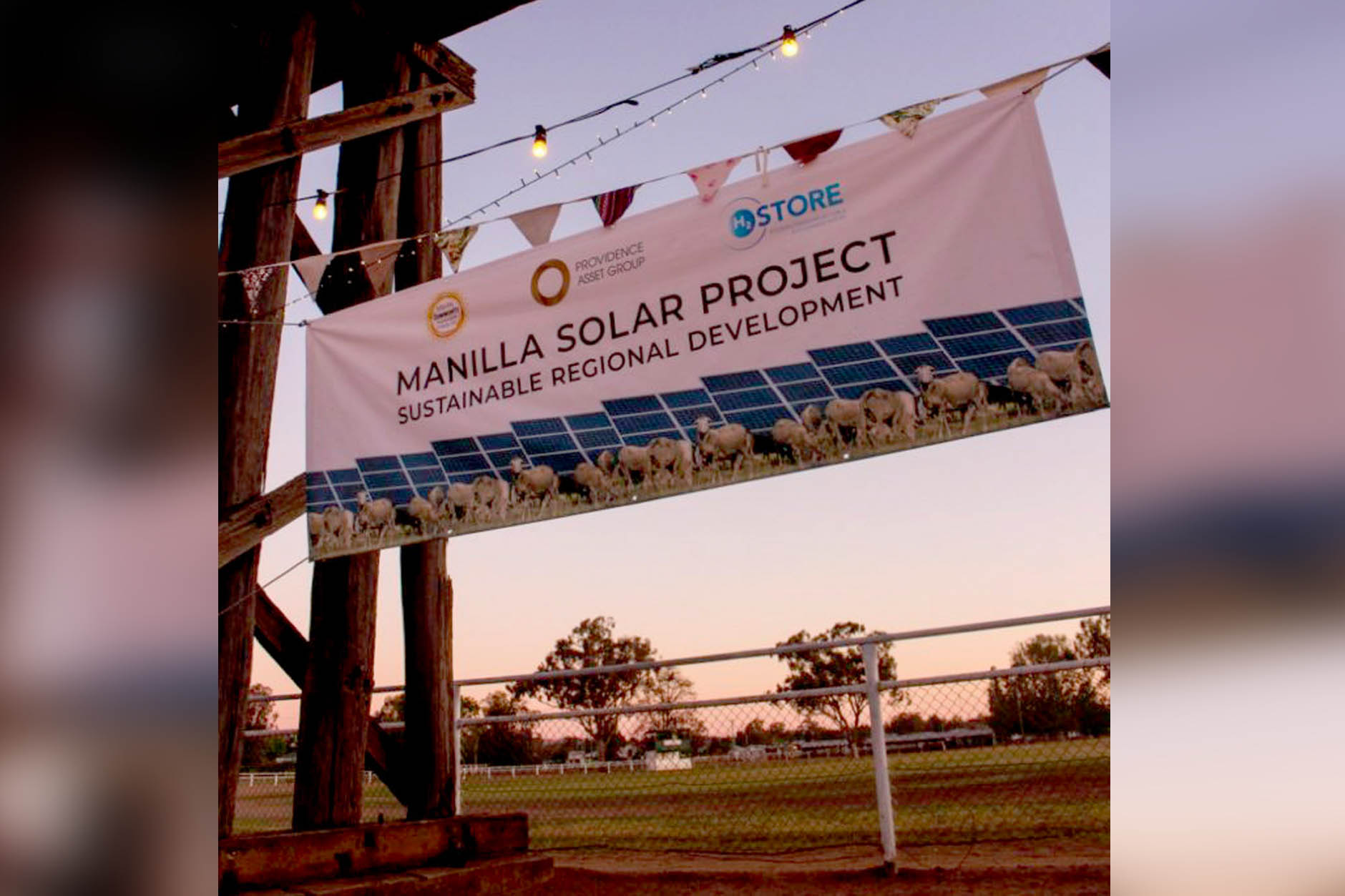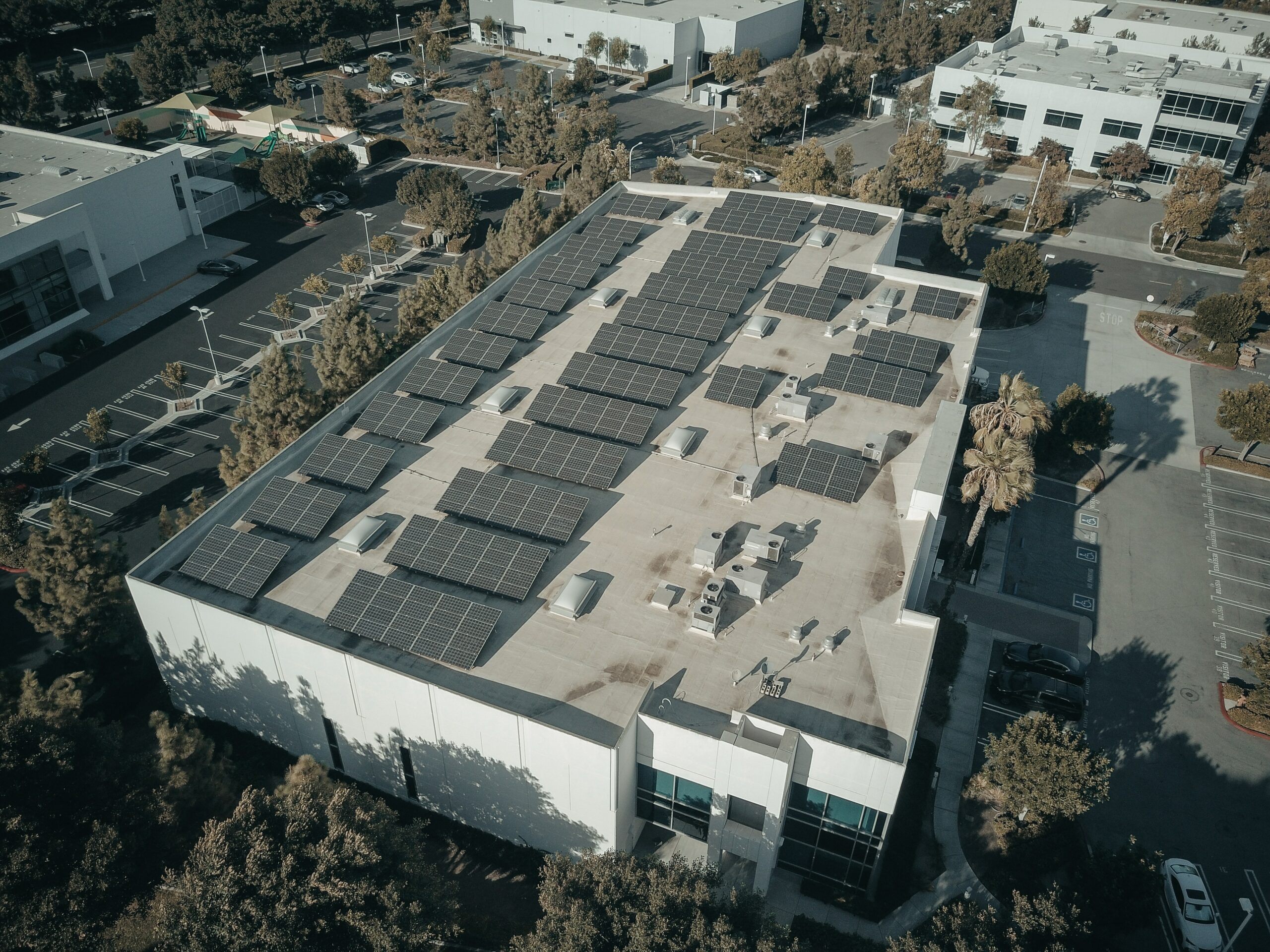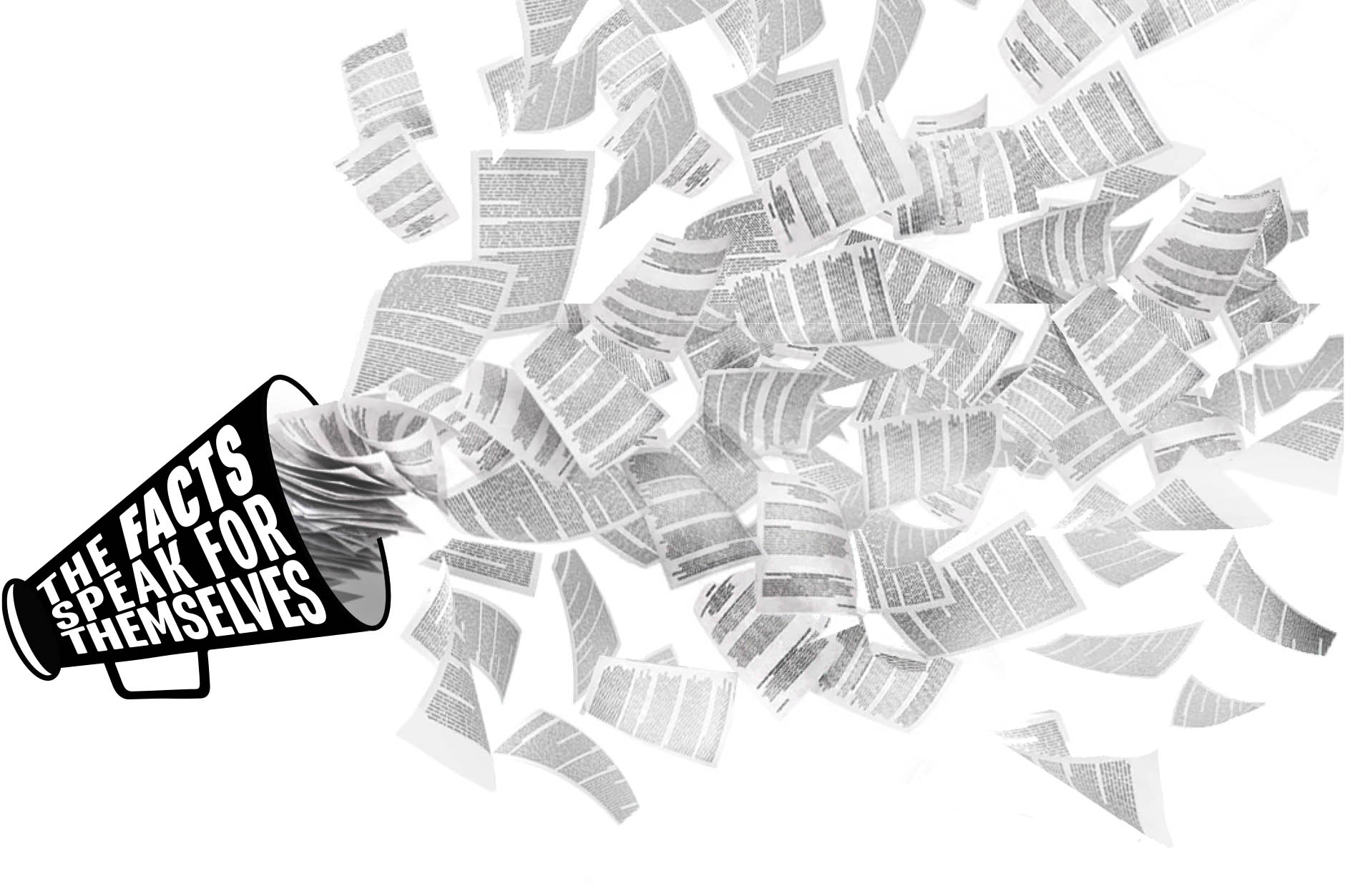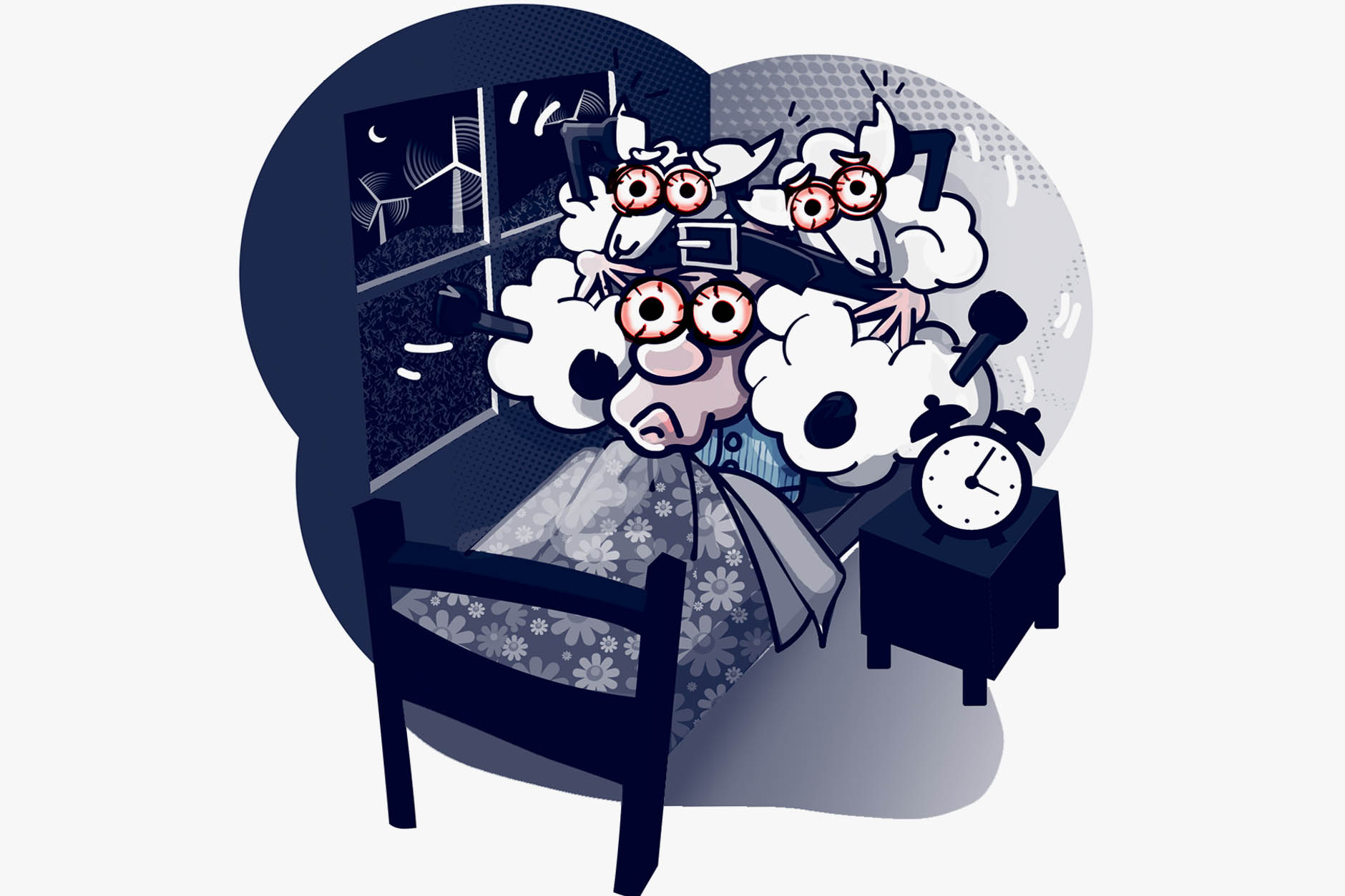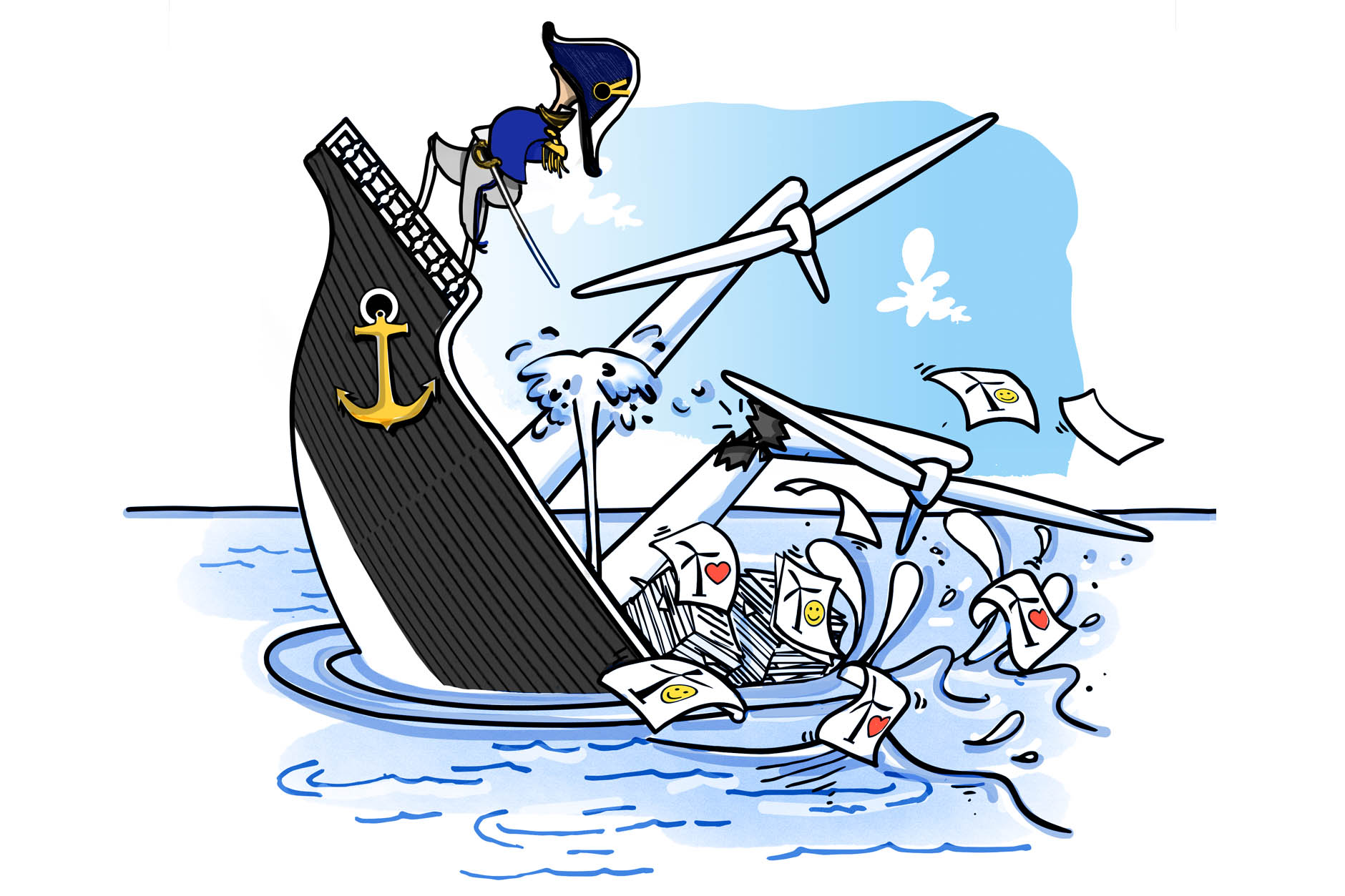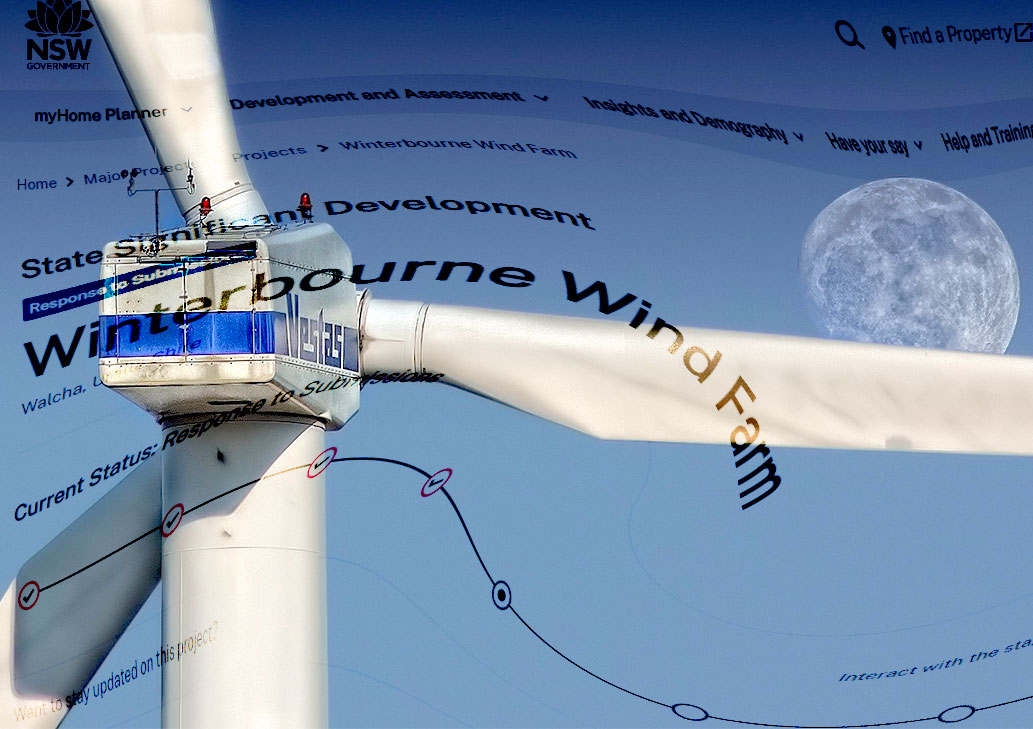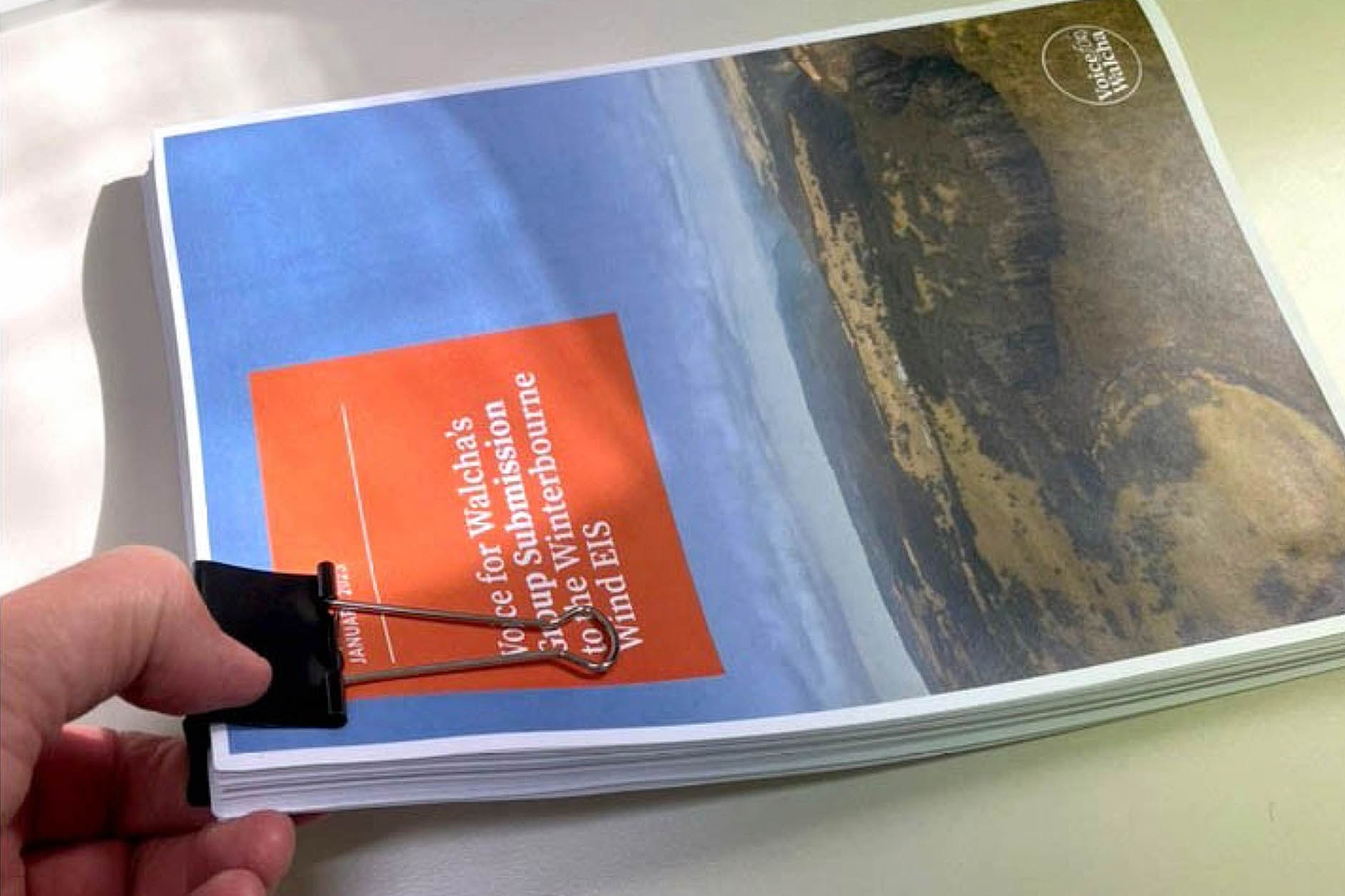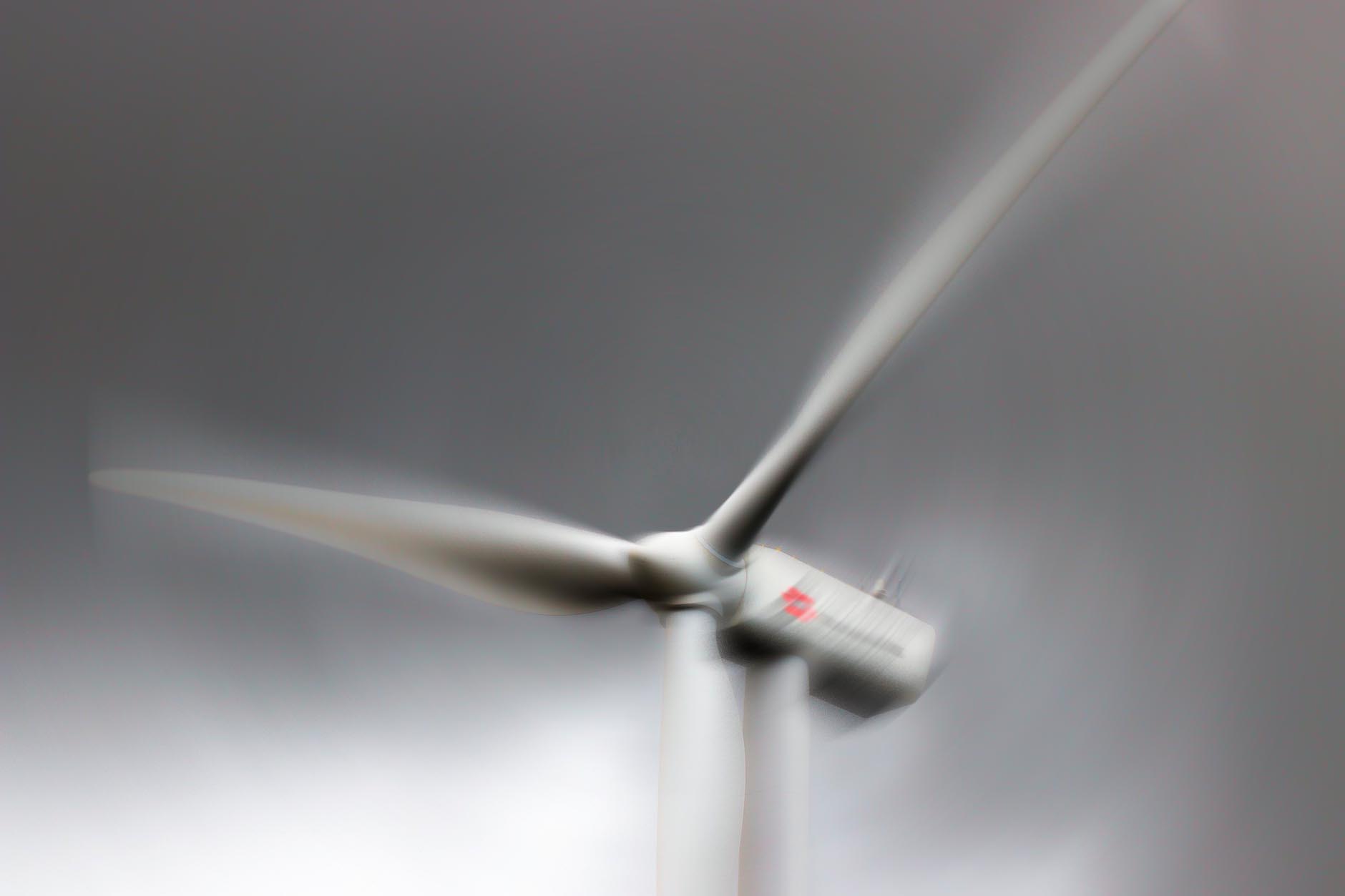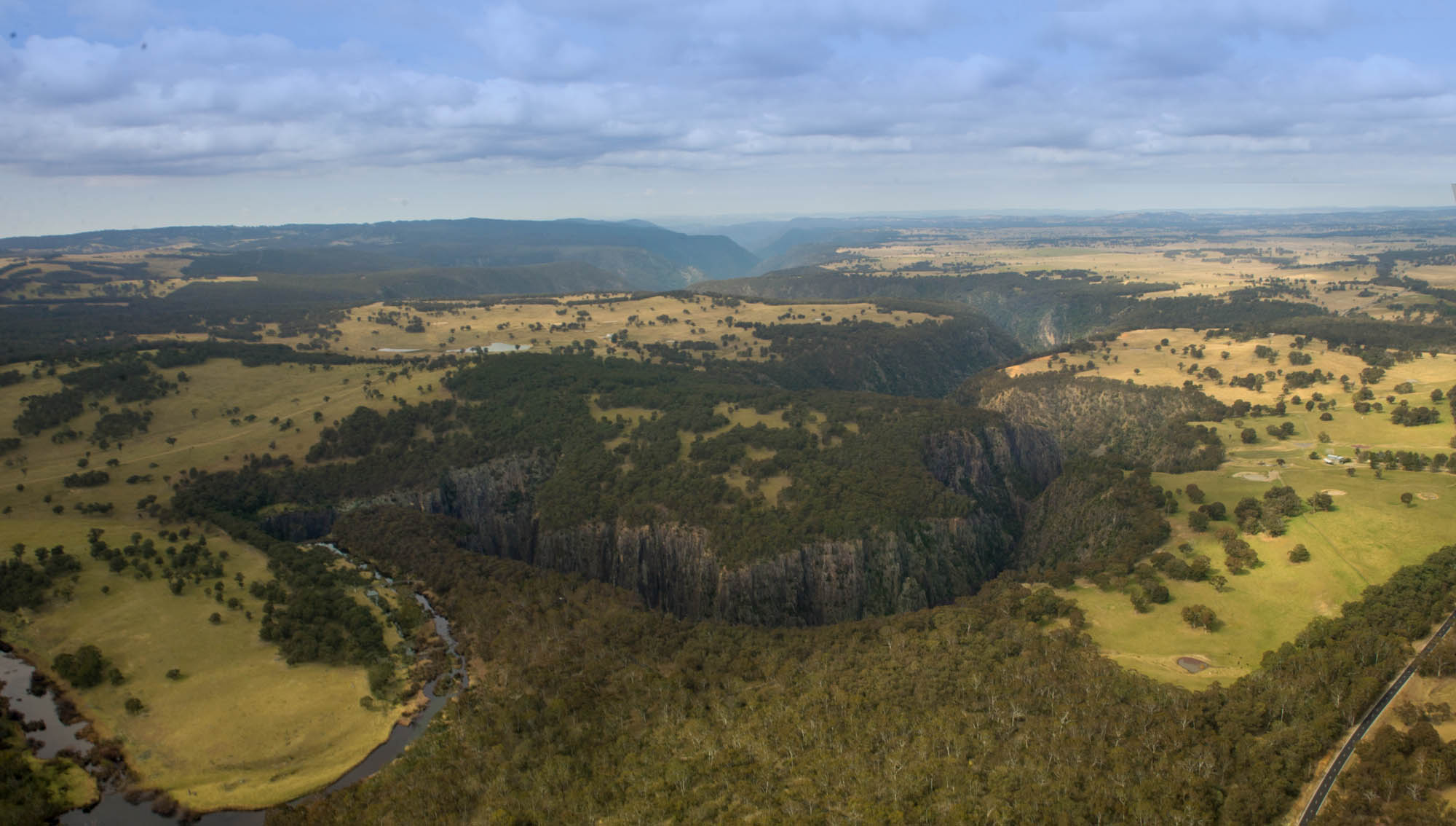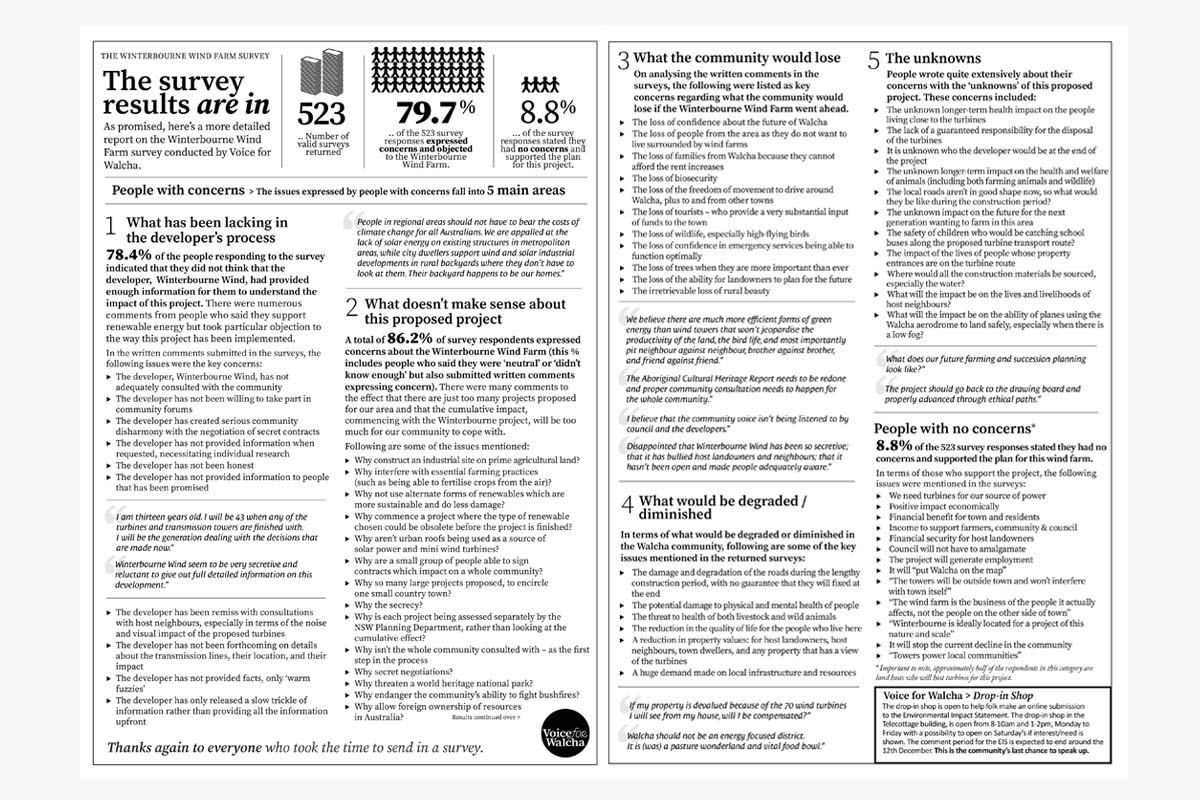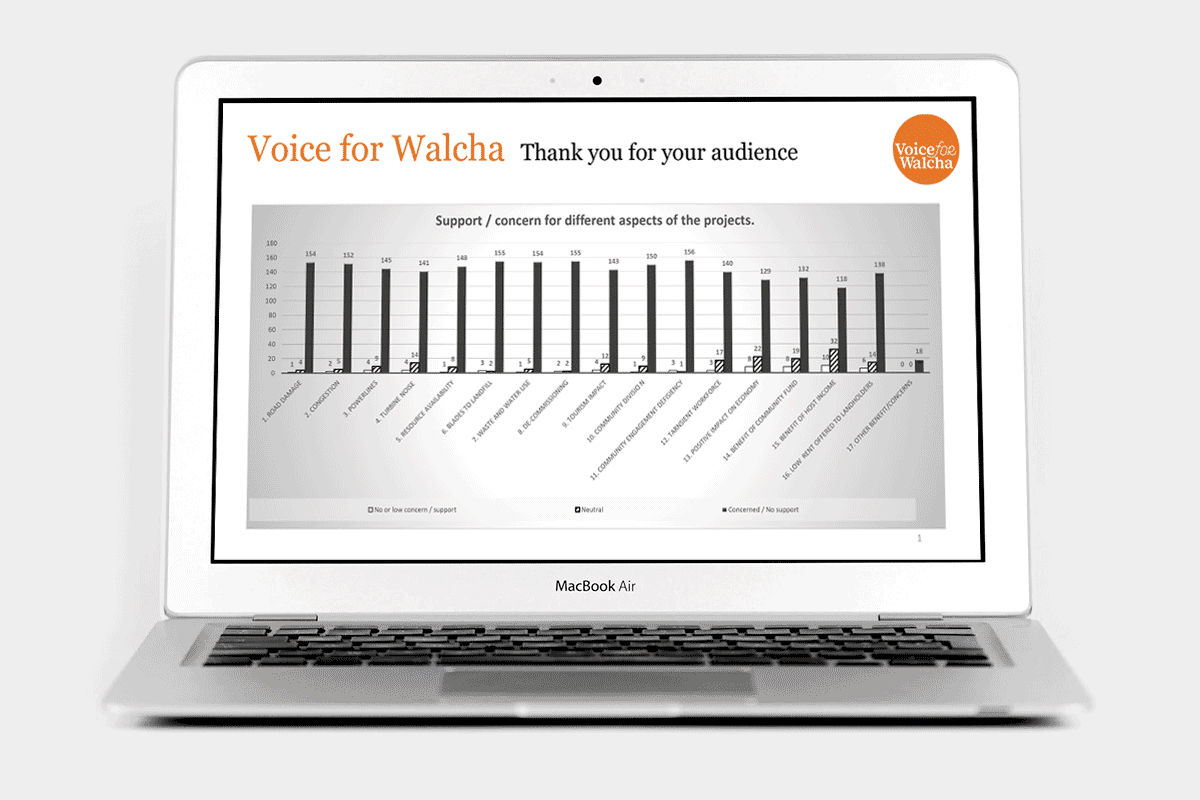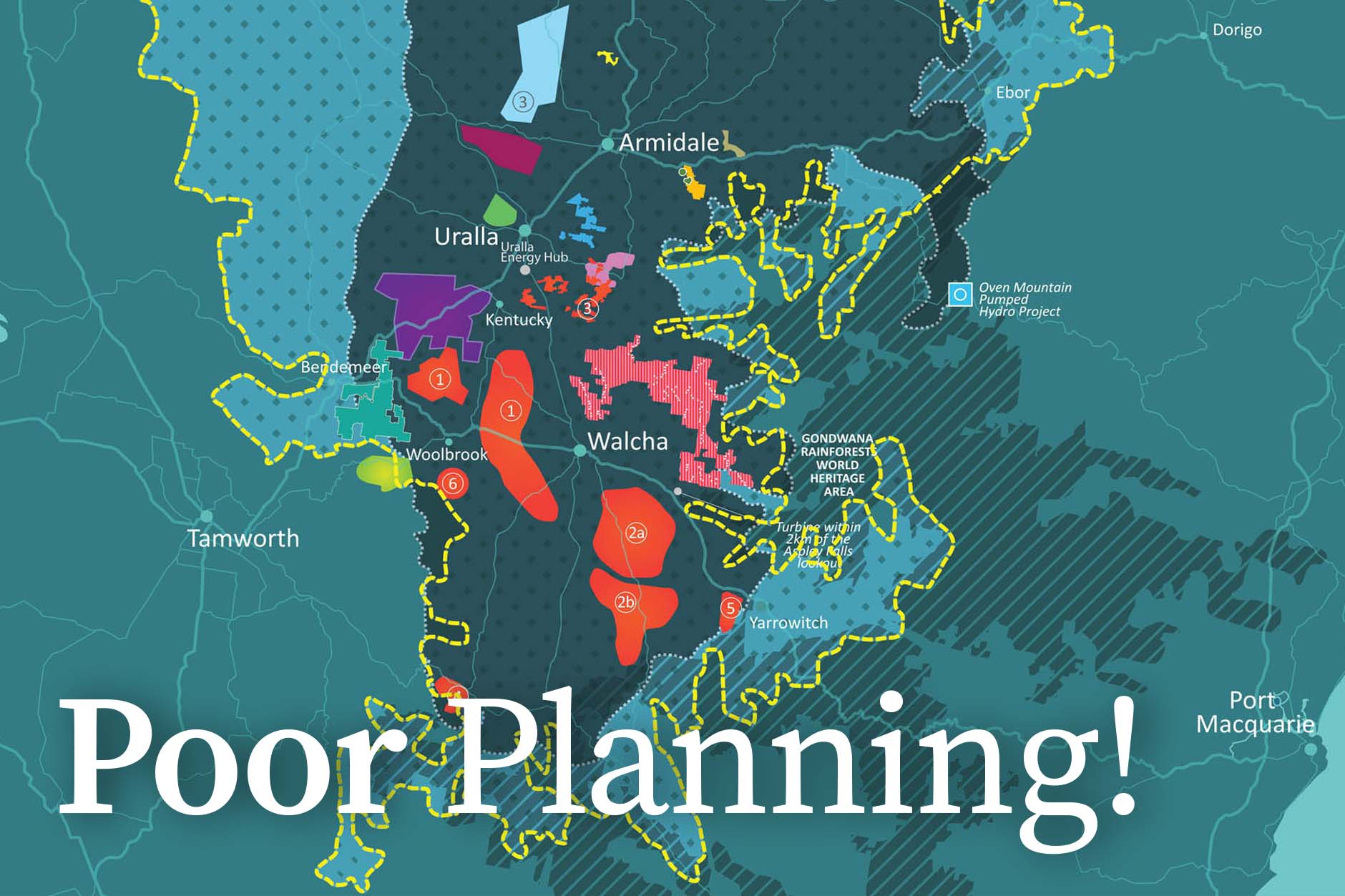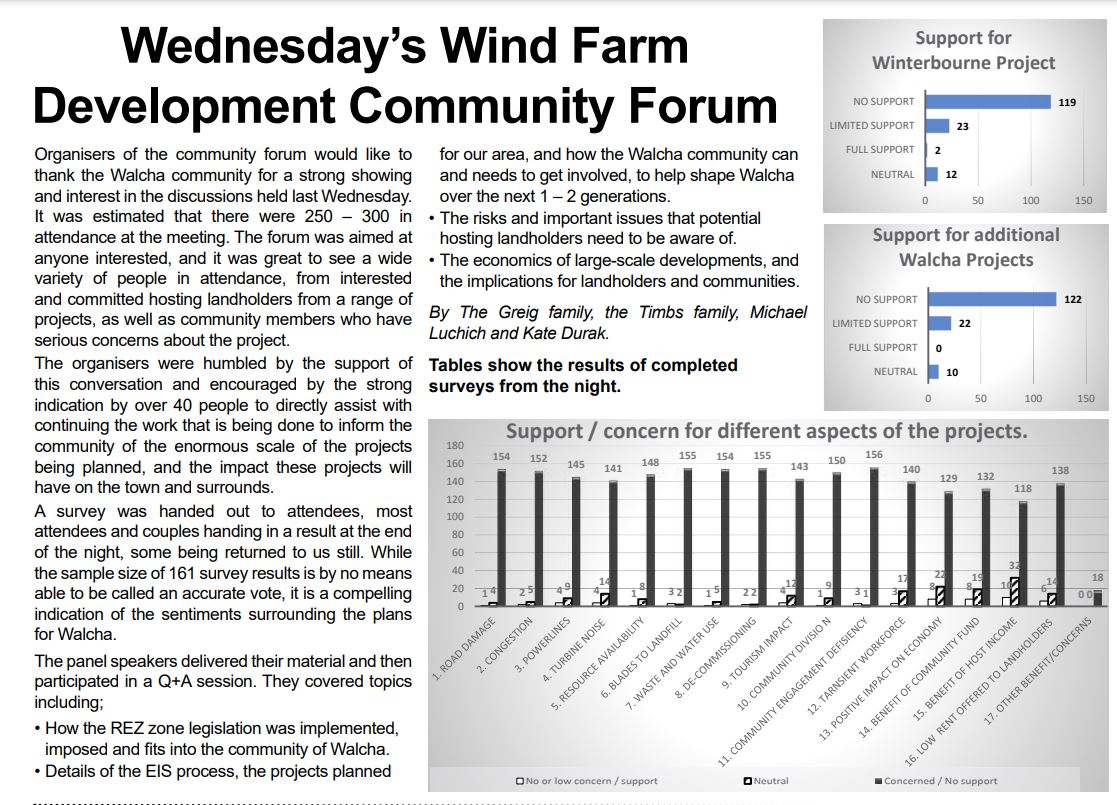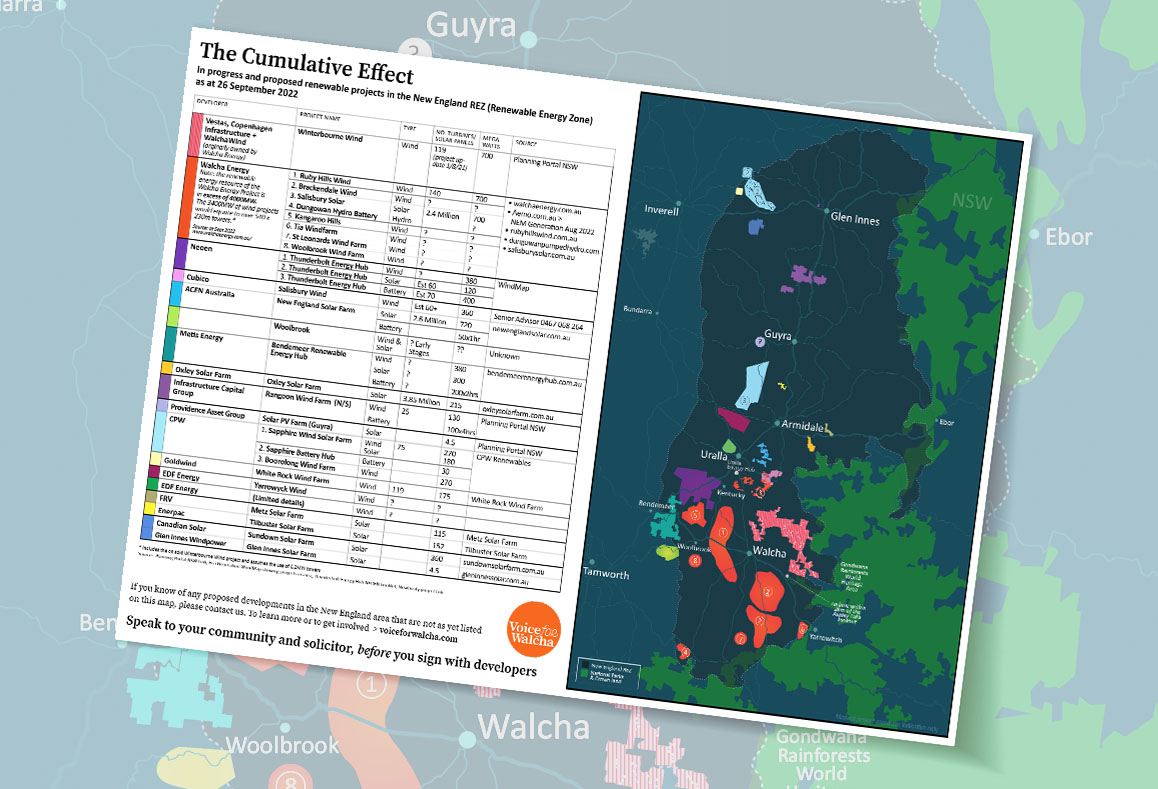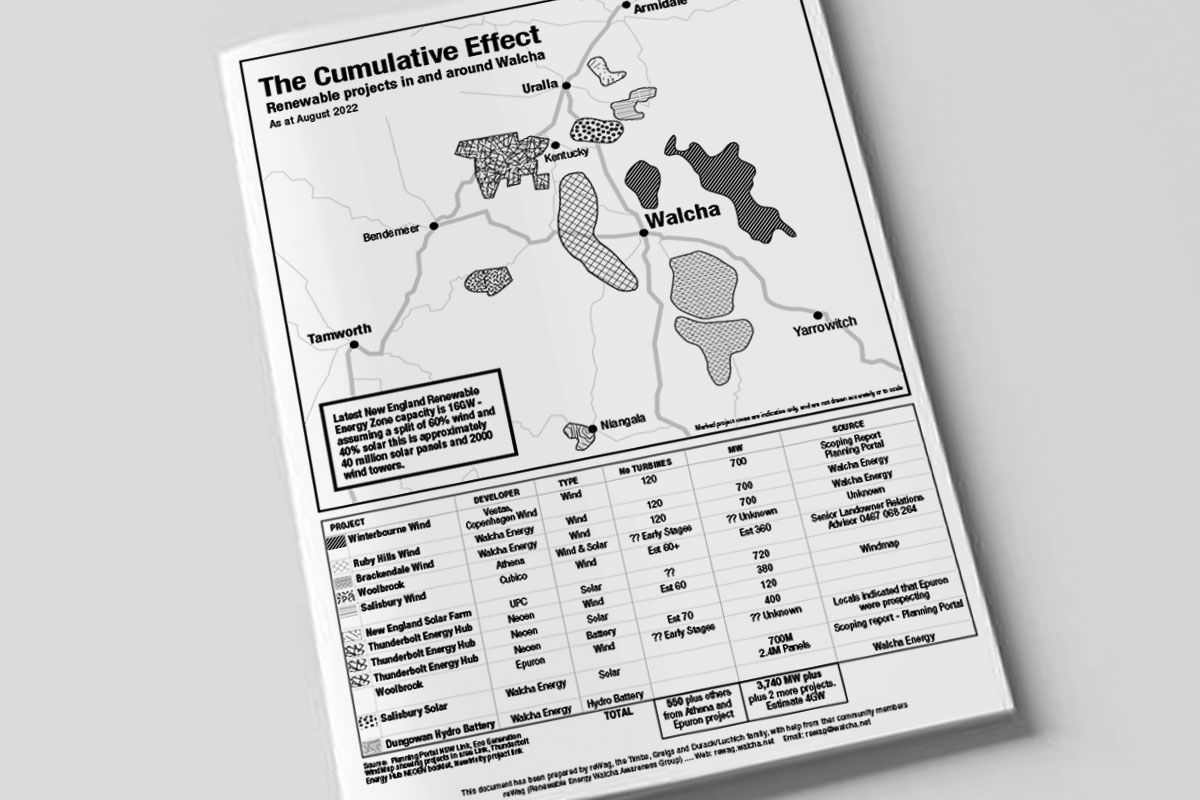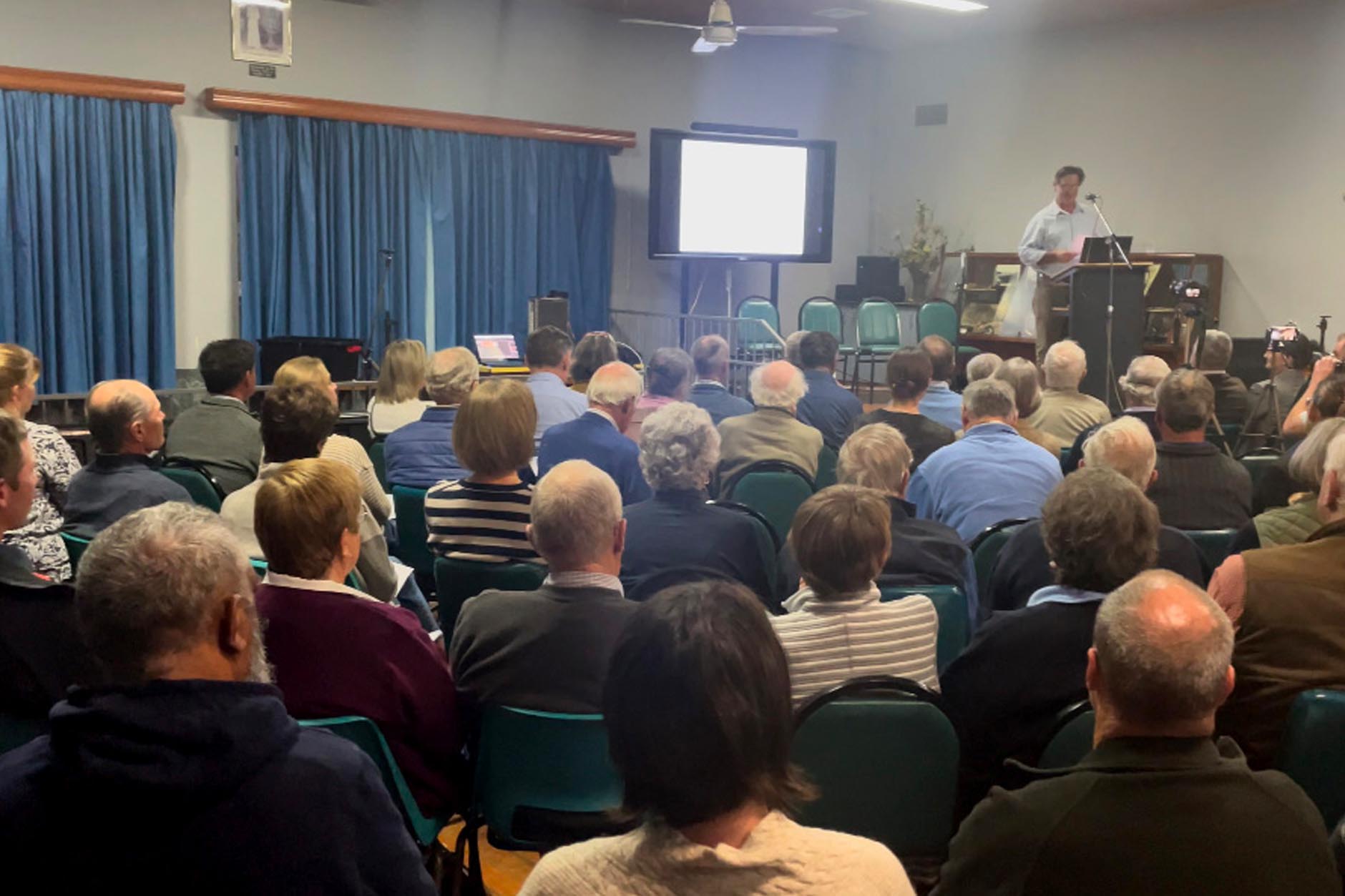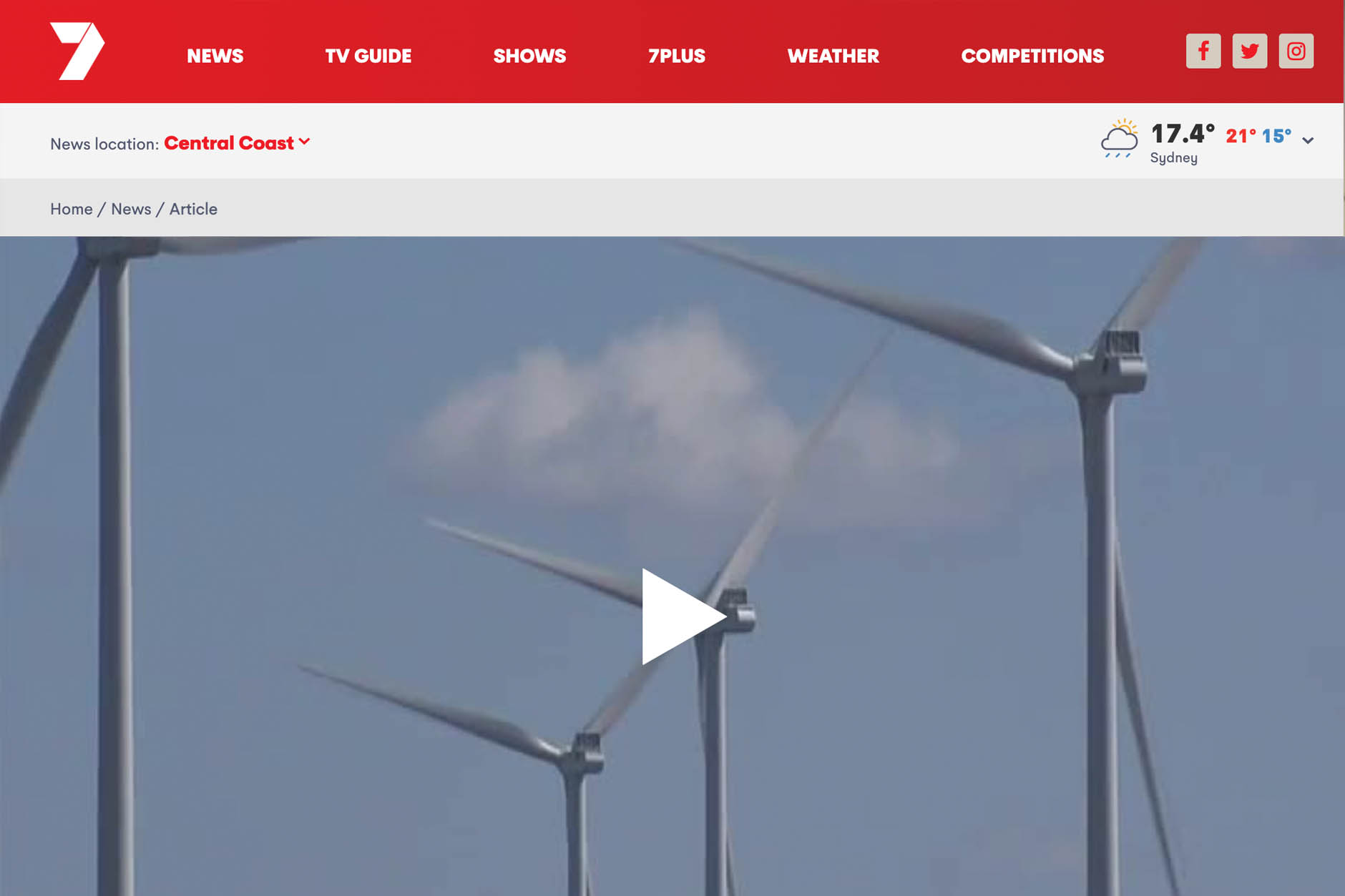by John Heffernan & Voice for Walcha
Wind basically took off as a source of renewable energy a bit before the year 2000, and the period up until now (2023) has basically seen the vast majority of wind energy capacity globally installed. That period also basically aligns with a wind farm’s life cycle – 20 to 25 years – manufacture, construction, maintenance and decommissioning. Which means that we’ve effectively reached an historical point where we can seriously assess wind energy and make sound judgements about the Good, the Bad and the In-between of that technology.
Which is exactly what’s happening. Quality studies into industrial wind farms are at last emerging. These can provide evidence-based information to help developers, governments and communities make better decisions about what that technology can do for them. Or not do for them. For that reason I want to highlight these studies, and will kick off with an excellent one from the Pusan National University of Korea – by J Dorrell and K Lee – a large comprehensive peer-reviewed study of scientific literature covering industrial wind developments around the world from the year 2000 to 2020, focusing on a raft of negative impacts. Analysing almost 150 articles, it’s a serious study.
The study’s main thesis is that: “As wind energy has expanded, the negative impacts have become more evident.” Those negatives are mainly economic, but not entirely. Unemployment is one to begin with, despite popular misconceptions. Yes, wind energy creates jobs, especially in manufacturing, but “the net employment impact for the economy as a whole is negative.” Market Volatility is another negative. “As wind farms have increased, so has overall intermittency of electricity supply”, along with “higher levels of volatility in the electricity market”. Higher Energy Costs have been another negative impact of increased wind farms, sometimes extremely so. Take Germany, for instance: “The national energy transition has almost doubled the price of electricity in just 15 years.”
Government subsidies for wind farms are another negative; there has been greater dependence on subsidies in many countries with the growth of wind projects. Declining efficiency of wind turbines over their life time is another (often hidden) negativity. So too are significant decreases in residential house values due to proximity, visibility and size of wind farms, especially in rural areas – a multifaceted matter, including issues like noise, shadow flicker, electromagnetic fields, visual obstruction, and more. Last but not least is a negative impact of wind farms that’s often overlooked: transition to grid connection. “Massive infrastructure investment is required for industrial scale electricity transmission lines, driving up electricity supply cost.”
The study also found that winds farms globally involved ecological and biodiversity impacts. “These negative externalities include bird fatalities, human health impacts, bat deaths, ground animal ecosystem disruption, and habitat loss.” On top of that: “The construction phase of wind farms has also been found to cause significant detrimental effects on residential well-being.
But wait. Be aware that the above negativities are essentially ones that have only become evident over the last twenty-odd years of wind energy’s global expansion.The technology already comes with huge onboard economic baggage. As the study emphasises: “upstream processes such as the extraction of raw materials, production of finished materials and components, transportation, and manufacturing as well as the downstream activities such as decommissioning require massive amounts of capital.”
That’s why this study ends by emphasising that in order to fully and fairly assess the entire economic performance of wind energy, its entire life cycle from use to disposal has to be understood. We are beginning to grasp that fact from quality research like this study. But we really do need to take serious notice of such research. Anything less is head-in-the-sand stuff. Ain’t no future in being an ostrich.

